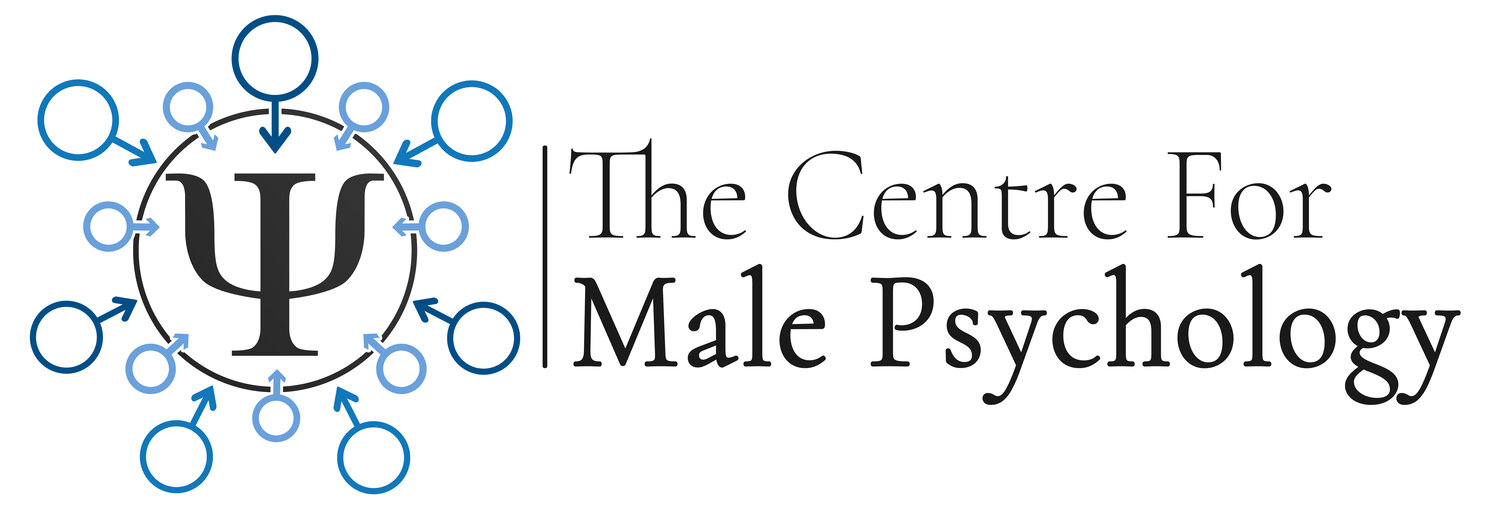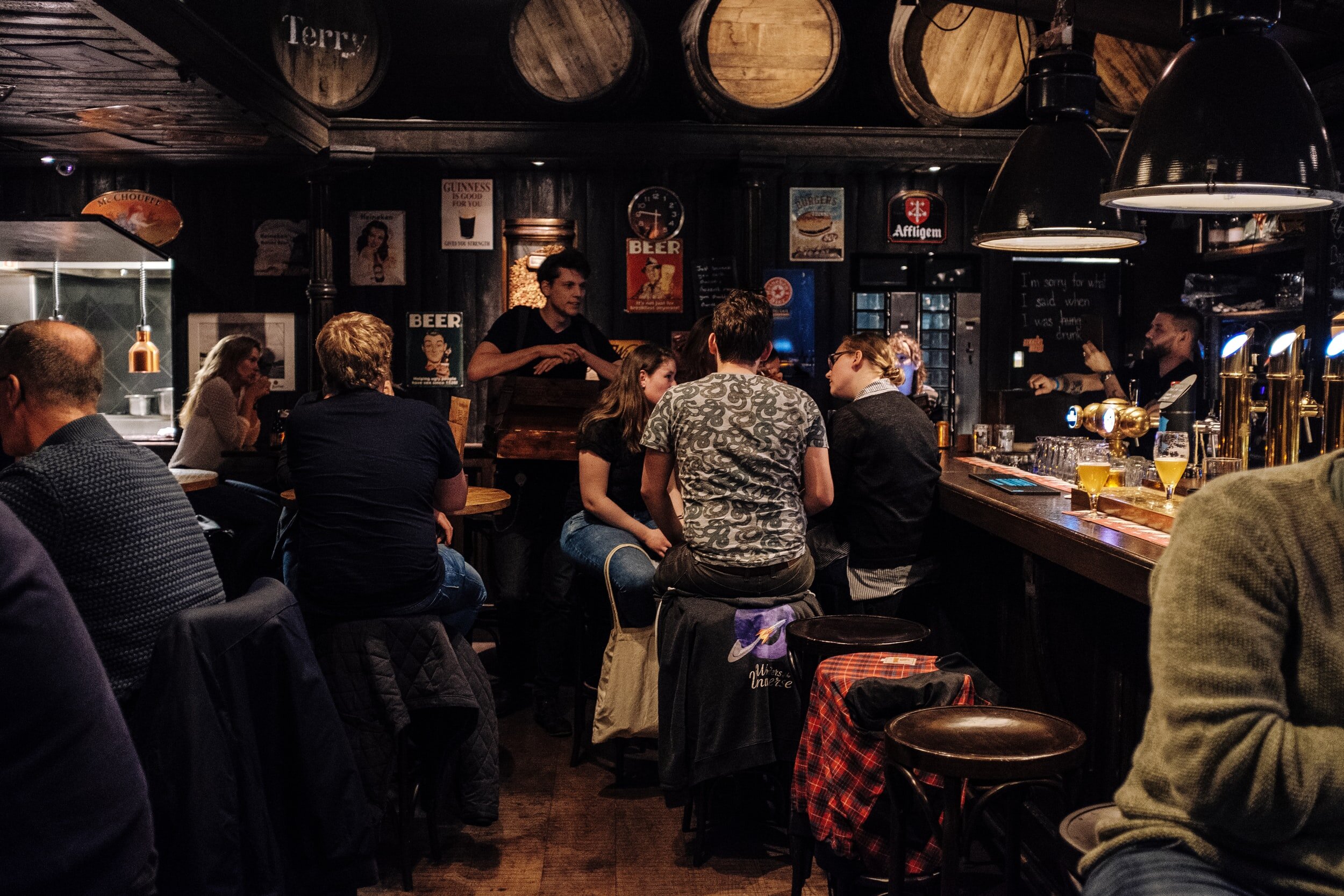Invisible Man: My Experience as a Male Trainee Clinical Psychologist in a Female-Dominated System
Clinical psychology training programs, particularly Doctorate in Clinical Psychology (DClinPsy) courses, have become overwhelmingly female-dominated over the past decades, with women comprising approximately 85% of trainees (Scior, 2014). While this shift has increased diversity in terms of gender representation, it has also generated unique challenges for the minority of male trainees. Male clinical psychology trainees often experience subtle and overt exclusion, bias, and silencing, which can impede their professional development and well-being. These experiences are compounded by a lack of attention to male perspectives in training curricula, leading to feelings of marginalization and isolation (Gupta et al., 2025). This article explores these experiences through an integration of personal narrative and academic critique, highlighting systemic issues and proposing urgent reforms.
Personal Scenarios: Feeling Invisible
From the very first day of training, I sensed that I was unwelcome. The discomfort was immediate. I recall walking into a room and being met with expressions of unease—subtle, yet unmistakable. Despite my efforts to introduce myself and initiate conversations, it took over twenty minutes for anyone to acknowledge me. It felt as though I had been relegated to the margins before I’d even had a chance to participate. I felt invisible—discarded onto the proverbial muck heap.
“Many of my peers—predominantly women—shared histories of trauma, and tragically, many of those experiences had involved men. While I deeply respect the pain and resilience behind such disclosures, I began to sense a kind of projection: an unspoken association between myself, as a straight male, and the harm they had suffered.”
As time went on, I began to overhear fragments of conversations within the cohort. Many of my peers—predominantly women—shared histories of trauma, and tragically, many of those experiences had involved men. While I deeply respect the pain and resilience behind such disclosures, I began to sense a kind of projection: an unspoken association between myself, as a straight male, and the harm they had suffered. In contrast, the gay men in the cohort appeared to be more readily accepted—treated almost as extensions of the female group—while I and the other heterosexual men were subtly distanced.
This was a doctoral-level programme, with an average cohort age of around 24, yet the social dynamics often felt reminiscent of a secondary school playground. I was frequently asked if I was “okay”, but not in a way that felt supportive. The tone was more inquisitive, even gossipy, than genuinely caring. I was excluded from group chats and omitted from invitations for coffee or lunch. It seemed, albeit unconsciously, that I was perceived as a threat—perhaps someone who might “fancy them”—rather than a fellow trainee. The resulting sense of isolation was profound.
A Night Out Turned into Isolation
Three months into the course, I attended a small social gathering at a local pub—ten people in total, eight women and two men. The conversation turned to relationships and sex, with several sharing explicit anecdotes, including references to intimate photographs of partners. I was then asked about my own experiences and responded with a similarly light-hearted comment about a woman I had dated. They had discussed a male member of staff and their appearance in a sexual manner, and to fit in, I similarly discussed my opinions regarding a female member of staff. As it was in a pub, informal and everyone was having a nice time, I left feeling good and included.
However, within 48 hours, I was summoned to an online meeting with course staff. I was informed that a formal complaint had been submitted, alleging that I had made “derogatory comments” about a female staff member, without any mention of the comments regarding a male member of staff. This accusation sent shockwaves through the cohort. For the first time, everyone was talking—about me.
Overnight, I became an outcast. People avoided me at lunch; seats were left empty, often occupied only by bags; and no one would sit beside me. I began to wake up feeling nauseous, lost my appetite, and started to believe that perhaps I didn’t belong—that perhaps I was, in fact, a terrible psychologist.
I will never forget the moment a senior female member of university staff—not affiliated with the course—deliberately sat next to me. She made space for an authentic conversation. Her presence alone moved me to tears. She did not offer hollow reassurances or performative empathy—she simply cared. She became a lifeline, reminding me that life existed beyond the DClinPsy, and that I had already demonstrated value and capability. For the first time in months, I felt seen—and safe.
What hurt most was the double standard. The women who had openly discussed their partners and sexual experiences faced no repercussions. No one stepped forward to clarify what had truly occurred. I was not given an opportunity to explain. The silence from others was deafening.
Surveillance and Silencing
Some time later, I was called in again. This time, a complaint had been made regarding my Twitter account. Unbeknownst to me, someone had been monitoring my posts for several months and had submitted screenshots. These tweets critiqued toxic forms of feminism—specifically ideological misandry, not women themselves. Some content referenced figures such as Professor Jordan Peterson, whose criticisms of gender ideology have led to significant controversy.
“On the evening before a major exam [I was told] the cohort had spent the night ridiculing me. They had gossiped about things I’d said in lectures and reflections. I did not sleep that night. I failed the exam the following day.”
I was asked to account for these tweets before the course management. I was labelled a misogynist. One staff member, employed by a women’s rape crisis organisation, questioned my suitability for working with vulnerable women and suggested I should be monitored in clinic. That comment was devastating.
From that point onward, I became hyper-vigilant. I found it difficult to write reflective pieces, to speak authentically, or to contribute in groups. I lost a sense of who I was—and of whom I could trust. I was no longer learning or developing—I was merely surviving.
Two weeks later, on the evening before a major exam, someone at a pub—at an event I hadn’t been invited to—told me the cohort had spent the night ridiculing me. They had gossiped about things I’d said in lectures and reflections. I did not sleep that night. I failed the exam the following day. That experience confirmed my deepest fear: it wasn’t just in my head.
The only support that felt genuine came from the Male Psychology Network (now the Centre for Male Psychology). They validated my experience, and I truly believe they helped save my life. I had been on the brink. Close friends checked in with me daily. Eventually, I made the painful but necessary decision to withdraw from clinical psychology training. I had to prioritise my wellbeing.
A Fresh Start That Wasn’t
After a year out, I returned to a new cohort. Initially, I was welcomed by four individuals and hoped things might be different. However, in the first three weeks, only one person out of 45 spoke to me in any seminar or discussion group. The familiar sense of exclusion returned—and it was disheartening.
Months later, I learned the truth. A former cohort member showed me a WhatsApp message from the day before my return. The course had apparently asked a few individuals to help make me feel welcome. One respondent wrote that she “did not feel safe” around me, citing vague “rumours” she had heard. No one volunteered to help. Eventually, someone agreed—reluctantly.
That message clarified the coldness, the silence, the sense of rejection. I had been pre-judged, socially ostracised, and denied a fair opportunity to start afresh. The psychological impact was significant.
Cultural Competence Misused
In a seminar on cultural humility, trainees were asked to reflect on a clinical case involving a client from a different cultural background. No one volunteered, so I offered to share.
For ninety minutes, I presented the case and responded to questions. I reflected openly on my positionality as a white male psychologist and the complexities of cross-cultural therapeutic work. The feedback in the session was thoughtful and positive.
Yet days later, I heard rumours that I was “uncomfortable working with non-white clients”, that I was “privileged”, even “racist”. These labels, layered on top of the previous accusations of misogyny, cemented my status as an outsider—someone considered fundamentally untrustworthy by the group.
Supervisory Challenges and Lived Mental Health Experience (LMHE)
Trainees with lived experience of mental health challenges face additional complexities, especially within predominantly female cohorts (Gupta et al., 2025). Supervisors may lack sufficient awareness or specific training to provide sensitive and effective support, particularly when gender dynamics intersect with lived experience (O’Sullivan et al., 2023).
To foster psychologically safe environments and promote trainee wellbeing, reflective practice and flexibility in supervision timelines are essential (Weightman et al., 2023). These approaches help accommodate individual needs and address the unique challenges faced by trainees with lived mental health experience.
Specific areas of the course that need to be improved
1) Fatherlessness, Male Suicide, and Psychological Wellbeing
Fatherlessness and a lack of positive male role models significantly impact male psychological development and mental health outcomes (Culpin et al., 2013). Male suicide rates remain disproportionately high in the UK, underscoring systemic failures in male mental health support (Office for National Statistics, 2024). Clinical psychology training programs must incorporate modules on male psychology to better equip clinicians. It is important that such programs are genuinely accepting of men and masculinity, and don’t fall into the trap of being ‘male-friendly’ on the surface only, by for example, allowing men to banter during sessions, but conducting therapy based on invalid notions such as the idea that masculinity is a significant cause of suicidality (Barry, 2025).
2) Gender Bias in Domestic Abuse Narratives
Despite increasing awareness of gender-based violence, discussions and training in clinical psychology often overwhelmingly centre on female victims. During my training, I attended a full-day workshop led by a senior female professor focusing exclusively on violence against women, with no equivalent session addressing male victims — either heterosexual or gay. This omission reflects a wider cultural blind spot. Research shows that men can also experience coercive control, emotional abuse, and physical violence, but their suffering is often minimised or disbelieved (Hines & Douglas, 2010). In heterosexual relationships, men may be threatened with the loss of their children, financially extorted, and psychologically degraded by accusations of poor fatherhood. These experiences are often invisible, particularly when abuse is verbal or manipulative rather than physical, making it harder to prove in legal contexts. As a result, many men feel trapped, silenced by stigma and fearful of being torn apart in family court proceedings. This can lead to internalised shame, hopelessness, and even suicidal ideation. Public awareness is slowly shifting; documentaries such as My Wife, My Abuser: The Secret Footage (Channel 5, 2023) have played a pivotal role in showing how destructive female-perpetrated abuse can be — when caught on camera. However, these conversations remain marginal in professional discourse, reinforcing a culture in which male victims are disbelieved, unsupported, or altogether ignored (Morgan & Wells, 2016).
“Within the context of clinical psychology training, [heterosexual men] are rendered a minority within a minority—isolated, voiceless, and at times, pathologized”.
3) Distinct Psychological Challenges Faced by Heterosexual Men
Although on paper each DClinPsy cohort includes a small number of men—typically between five and seven, this group is far from cohesive. Rather than forming a united minority, the gay and bisexual men often align more naturally with the overwhelmingly female majority. These trainees tend to be perceived as “safe” or “non-threatening”, fitting more comfortably within the dominant ideological culture of inclusivity and shared experiences of marginalisation. In contrast, the heterosexual male trainee often stands alone: neither seen as marginalised nor granted the benefit of inclusion. Despite being part of a wider society in which heterosexual men are statistically the majority, within the context of clinical psychology training, they are rendered a minority within a minority—isolated, voiceless, and at times, pathologised. This situation has been described as a “reversal of oppression,” whereby dominant narratives around privilege and identity silence those who do not neatly fit them. This disparity in treatment reflects ideas such as Connell’s (1995) concept of hegemonic masculinity, which frames heterosexual men as the dominant group and women and non-heterosexual men as subordinated. This model is very common in the social sciences, and if training institutions are influenced, explicitly or implicitly, by Connell’s work, it would not be surprising that straight men are afforded less visibility, affirmation, and safety within the training context.
In one study of DClinPsy applicants, 66% of male respondents identified as LGBT+, indicating that straight men are significantly underrepresented in comparison to national demographics (Frankham et al., 2024). Yet no robust research exists to explore the implications of this shift—not for trainees, nor for the patients they will ultimately serve. As the training curriculum increasingly foregrounds LGBT+ experiences, it inadvertently marginalises the unique psychological challenges faced by heterosexual men, such as emotional suppression. This ideological skew carries clinical consequences. It fosters a generation of psychologists less attuned to straight male distress, less confident in engaging with men therapeutically, and more likely to miss or misattribute risk indicators. Given that 75% of suicides in the UK are by men—most of whom are heterosexual—this blind spot is not just academic; it is fatal (ONS, 2024). In such an environment, the call for open discourse—championed by thinkers like Jordan Peterson, who warns against ideological conformity in psychotherapy training—becomes more urgent than ever. Without space for diverse viewpoints, dissenting experiences, and underrepresented identities, clinical psychology risks failing the very people it aims to help (Peterson, 2018; MacKinnon MacKinnon et al., 2011).
4) The Impact of Feminism and DEI on Male Trainees
While feminist and DEI initiatives have driven vital reforms in clinical psychology training, their implementation can sometimes inadvertently marginalise men (MacKinnon et al., 2011; Quinn et al., 2020). MacKinnon and colleagues highlight that feminist-informed supervision—if applied without sensitivity to male trainees—can unintentionally silence their experiences, suggesting supervisors need to adapt feminist principles by “opening the dialogue” and avoiding assumptions about men’s perspectives. Quinn et al. (2020) found that although male doctoral students in predominantly female training groups sometimes gained leadership visibility, many also reported feeling self-conscious or out of place, stating that “the male presence felt hyper-visible,” which at times impeded honest discussion and diversity of thought. This ideological rigidity risks undermining the inclusive goals of DEI by discouraging genuine dialogue and reinforcing gendered power dynamics.
A Proposal for Reform in Clinical Psychology Training
Male psychology remains underserved and underrepresented in clinical training (Barry, Kingerlee, Seager, & Sullivan, 2019), despite longstanding evidence that traditional masculine norms can benefit men’s mental health outcomes (e.g. Barry, 2023; Barry, Walker, Liddon & Seager, 2020; Månsdotter et al, 2009; Burkley et al, 2016; Lin et al, 2021). Although The British Psychological Society (BPS) has published guidance on psychological interventions tailored to support male adults (Seager & Barry, 2022), such approaches remain largely absent from clinical training curriculum. Constructs like stoicism, independence, and emotional control — often viewed negatively within mainstream mental health paradigms — can be understood more compassionately within a masculinities-informed context (Liddon & Barry, 2021). It is unfortunate that, despite Dr Rebecca Owens offering a well-received Male Psychology module within her undergraduate psychology degree, there is no equivalent provision within DClinPsy courses. Dr Owens provides strong evidence demonstrating how positively the Male Psychology module is received by students, and how it equips psychology graduates with a nuanced understanding of men’s mental health issues as they enter professional practice.
“Rather than focusing solely on whether a trainee can articulate empathy in the prescribed format, training programmes might benefit from more nuanced evaluations of authenticity, therapeutic alliance, and long-term client outcomes.”
Reflecting on my time within the Doctorate in Clinical Psychology (DClinPsy) programme, I was struck not only by the overwhelming gender imbalance, but also by a broader cultural environment that felt emotionally sterile, ideologically rigid, and disconnected from the nuanced psychological realities of men. Genuine empathy often seemed lacking across trainees, with an observable dominance of middle-class privilege and inflated egos. For male trainees, particularly those from working-class or diverse backgrounds — the programme could feel alienating, invalidating and ineffective.
Another area of concern lies in the use of assessment tools such as the CTS-R (Cognitive Therapy Scale – Revised), which is commonly used to evaluate CBT competencies during clinical training. While intended to provide a structured framework for assessing therapeutic skill, the CTS-R appears to privilege certain interpersonal styles and emotional expressiveness that may align more naturally with female and gay trainees. The emphasis on overt emotional engagement, verbal empathy, and reflective expression may inadvertently disadvantage heterosexual male trainees, who, whether through social conditioning or temperament—may demonstrate therapeutic presence and empathy in less demonstrative ways (Mahalik, Good, & Englar-Carlson, 2003). Furthermore, this framework may mirror the communication styles of a predominantly female client population, potentially reinforcing biases around what effective therapy “looks like” (Elliott, Bohart, Watson, & Greenberg, 2011).
Rather than focusing solely on whether a trainee can articulate empathy in the prescribed format, training programmes might benefit from more nuanced evaluations of authenticity, therapeutic alliance, and long-term client outcomes. Genuine empathy, the ability to build trust, and the capacity to engage clients meaningfully, reflected in return rates and sustained therapeutic relationships, are arguably more critical markers of competence (Norcross & Wampold, 2011; Castonguay & Beutler, 2005). Many trainees may score highly on the CTS-R through intellectual skill or rehearsed technique, yet this does not always equate to the provision of effective or transformative psychotherapy. A more holistic and outcome-oriented approach to assessing therapeutic skill could help ensure that diverse interpersonal styles, including those more typical of male therapists, are recognised and valued within the profession.
“The prevailing feminist narrative paints men as inherently privileged, leaving little room to consider the distinct psychological struggles men face.”
Specific suggestions for change
a) Curriculum Inclusion: Introduce mandatory Male Psychology modules covering male mental health, fatherhood, suicide prevention, and male socialisation (Barry et al., 2019), measuring clinical competence through alternative measures than the CTS-R (Cognitive Therapy Scale – Revised) such as genuine empathy, long-term therapy effectiveness, client retention rates.
b) Supervisory Training: Develop supervisor competencies in gender sensitivity and support for trainees with lived experience.
c) Safe Spaces: Create forums and peer support groups for male trainees to discuss gendered challenges without fear of stigma.
d) Policy Revision: The BPS should adopt clear policies protecting trainees from ideological discrimination and ensure complaints procedures are fair and transparent.
e) Research: To explore the lived experiences of male psychology trainees navigating clinical training in a predominantly female profession, focusing on themes of belonging, isolation, sexuality, and social identity as gender minorities
Closing Reflections
My experience of clinical psychology training left psychological scars. I entered the profession with sincere intentions—to help, to heal, and to learn. But I quickly found that, as a heterosexual man, I was often met with suspicion, hostility, or silence. Group dynamics, combined with unchecked ideological assumptions, left little space for nuance, fairness, or repair.
I do not claim to have been faultless. I made mistakes, as any trainee might. But I was never granted the benefit of the doubt, nor the opportunity to clarify or explain. I was judged through a lens I could neither control nor challenge.
What I needed was what we all need—genuine curiosity, compassion, and fairness. Not gossip, not weaponised ideology, and not public condemnation.
I remain committed to psychological work. But I am now even more committed to advocating for reform—within our training structures, our professional culture, and the ways we respond to those who do not fit the dominant narrative.
Conclusion
Leaving the course brought immense emotional relief. I felt a profound release, a lifting of the psychological weight I had carried throughout. My self-worth, which had been eroded within the course’s invalidating environment, began to slowly rebuild. Yet, I fear that meaningful reform is unlikely. Those occupying positions of power within clinical psychology, disproportionately middle-class women, may not see the need to shift a system that already works in their favour. The prevailing feminist narrative paints men as inherently privileged, leaving little room to consider the distinct psychological struggles men face. It is my hope that other domains of mental health, such as psychiatry where gender representation is more balanced, may take the lead in recognising and integrating male psychology. Until then, we remain in a system that risks continuing to fail a significant proportion of the population it claims to serve.
Scroll down to leave your comment
References
Barry, J., Kingerlee, R., Seager, M., & Sullivan, L. (Eds.). (2019). The Palgrave Handbook of Male Psychology and Mental Health. Cham, Switzerland: Palgrave Macmillan. https://doi.org/10.1007/978-3-030-04384-1
Barry, J., Walker, R., Liddon, L., & Seager, M. (2020). Reactions to contemporary narratives about masculinity: A pilot study. Psychreg Journal of Psychology, 4, 2, 8-21 https://discovery.ucl.ac.uk/id/eprint/10118127/1/8-21.barry_.pdf
Barry J (2025). Suicide and the workplace: The BSI consultation on intervention, prevention and support for people affected by suicide. Male Psychology. Available online at https://www.centreformalepsychology.com/male-psychology-magazine-listings/fathers-day-cards-mental-health-and-men-talking-about-their-feelings
Barry, J. (2023). The belief that masculinity has a negative influence on one’s behavior is related to reduced mental well-being. International Journal of Health Sciences, 17(4), 29. https://pmc.ncbi.nlm.nih.gov/articles/PMC10321463/
Barton, F., & Saib, A. (2023). Death registration summary statistics, England and Wales: 2022. Office for National Statistics. https://www.ons.gov.uk/peoplepopulationandcommunity/birthsdeathsandmarriages/deaths/bulletins/deathregistrationsummarytables/2022
Burkley, M., Wong, Y. J., & Bell, A. C. (2016). The Masculinity Contingency Scale (MCS): Scale development and psychometric properties. Psychology of Men & Masculinity, 17(2), 113. https://psycnet.apa.org/buy/2015-18950-001
British Psychological Society. (2023b). The Alternative Handbook 2023–2024. https://www.bps.org.uk/alternative-handbook-2023-2024
British Psychological Society. (2023c). Comrades and competitors. https://explore.bps.org.uk/content/bpscpf/1/309/25
Calzo, J. P., Masyn, K. E., Corliss, H. L., Scherer, E. A., Field, A. E., & Austin, S. B. (2015). Patterns of body image concerns and disordered weight-and shape-related behaviors in heterosexual and sexual minority adolescent males. Developmental Psychology, 51(9), 1216–1225. https://doi.org/10.1037/dev0000027
Castonguay, L. G., & Beutler, L. E. (2005). Principles of therapeutic change that work. Oxford University Press. https://books.google.com/books?hl=en&lr=&id=QPRQEAAAQBAJ&oi=fnd&pg=PR9&dq=Principles+of+therapeutic+change+that+work.+&ots=SCUsKnYm31&sig=TsfkMJgitr5_0SyqVFX2TUt_QqY
Channel 5. (2023). My Wife, My Abuser: The Secret Footage [Documentary]. ITN Productions.
Caswell, R., & Baker, M. (2008). Men in a female-majority profession: Perspectives of male trainees in clinical psychology. Clinical Psychology Forum, 1(285), 20–24. Retrieved from https://explore.bps.org.uk/content/bpscpf/1/285
Connell, R. W. (1995). Masculinities. Polity Press
Culpin, I., Heron, J., Araya, R., Melotti, R., & Joinson, C. (2013). Father absence and depressive symptoms in adolescence: Findings from a UK cohort. Psychological Medicine, 43(12), 2615–2626. https://doi.org/10.1017/S0033291713000603
Elliott, R., Bohart, A. C., Watson, J. C., & Greenberg, L. S. (2011). Empathy. Psychotherapy, 48(1), 43–49. https://doi.org/10.1037/a0022187
Frankham, A., Bravey, S., & Marczak, M. (2024). Comparing diversity in the Coventry and Warwick clinical psychology doctorate selection process against national standards. Clinical Psychology Forum, 376, 7. https://doi.org/10.53841/bpscpf.2024.1.376.7
Gupta, V., Eames, C., Sharples, B., Bryant, A., Greenhill, B., Golding, L., & Fisher, P. (2025). Bridging them and us divisions: A focus group study of identities in clinical psychology training. The Clinical Teacher, 22(1), 1–6. https://doi.org/10.1111/tct.70022
Hines, D. A., & Douglas, E. M. (2010). Intimate terrorism by women towards men: Does it exist? Journal of Aggression, Conflict and Peace Research, 2(3), 36–56. https://doi.org/10.5042/jacpr.2010.0335
Liddon, L., & Barry, J. (2021). Perspectives in male psychology: An introduction. John Wiley & Sons. https://www.wiley.com/en-gb/Perspectives+in+Male+Psychology%3A+An+Introduction-p-9781119685357
Lin, J., Zou, L., Lin, W., Becker, B., Yeung, A., Cuijpers, P., & Li, H. (2021). Does gender role explain a high risk of depression? A meta-analytic review of 40 years of evidence. Journal of Affective Disorders, 294, 261-278. https://www.sciencedirect.com/science/article/abs/pii/S0165032721006972
MacKinnon, C. J., Bhatia, M., Sunderani, S., Affleck, W., & Smith, N. G. (2011). Opening the dialogue: Implications of feminist supervision theory with male supervisees. Professional Psychology: Research and Practice, 42(2), 130–136. https://doi.org/10.1037/a0023396
Mahalik, J. R., Good, G. E., & Englar-Carlson, M. (2003). Masculinity scripts, presenting concerns, and help seeking: Implications for practice and training. Professional Psychology: Research and Practice, 34(2), 123–131. https://doi.org/10.1037/0735-7028.34.2.123
Månsdotter, A., Lundin, A., Falkstedt, D., & Hemmingsson, T. (2009). The association between masculinity rank and mortality patterns: a prospective study based on the Swedish 1969 conscript cohort. Journal of Epidemiology & Community Health, 63(5), 408-413. https://jech.bmj.com/content/63/5/408.short
Morgan, W., & Wells, M. (2016). ‘It’s deemed unmanly’: Men’s experiences of intimate partner violence (IPV). The Journal of Forensic Psychiatry & Psychology, 27(3), 404–418. https://doi.org/10.1080/14789949.2015.1127986
Norcross, J. C., & Wampold, B. E. (2011). Evidence-based therapy relationships: Research conclusions and clinical practices. Psychotherapy, 48(1), 98–102. https://doi.org/10.1037/a0022161
Office for National Statistics. (2024). Suicides in England and Wales: 2023 registrations. https://www.ons.gov.uk/peoplepopulationandcommunity/birthsdeathsandmarriages/deaths/bulletins/suicidesintheunitedkingdom/2023
Owens, R (2020). The Male Psychology undergraduate module – a first for the UK and the world. Male Psychology, https://www.centreformalepsychology.com/male-psychology-magazine-listings/the-male-psychology-undergraduate-module-a-first-for-the-uk-and-the-world
O’Sullivan, E., Abujaber, N., Ryan, M., McBride, K. A., Blum, P. T., & Vallières, F. (2023). Gender considerations for supportive supervision in humanitarian contexts: A qualitative study. Cambridge Prisms: Global Mental Health, 10, e50.
Peterson, J. B. (2018). 12 Rules for Life: An Antidote to Chaos. Penguin.
Quinn, K. N., Kelley, M. M., McGill, K. L., Smith, E. M., Whipps, Z. W., & Holmes, N. G. (2020). Outnumbered but meaningful: The experience of male doctoral students in professional psychology training programs. Journal of Clinical Psychology Education, 14(2), 120–135. https://psycnet.apa.org/record/2015-57072-001
Schmidt, M., Taube, C. O., Heinrich, T., Vocks, S., & Hartmann, A. S. (2022). Body image disturbance and associated eating disorder and body dysmorphic disorder pathology in gay and heterosexual men: A systematic analyses of cognitive, affective, behavioral and perceptual aspects. PLOS ONE, 17(12), e0278558. https://doi.org/10.1371/journal.pone.0278558
Scior, K. (2014). What predicts performance during clinical psychology training? British Journal of Clinical Psychology, 53(3), 297–310. https://doi.org/10.1111/bjc.12035
Seager, M., & Barry, J. (2022). Psychological interventions to help male adults. The British Psychological Society. https://cms.bps.org.uk/sites/default/files/2022-11/Practice%20Briefing%20-%20psychological%20interventions%20to%20help%20male%20adults.pdf
van den Brink, F., Vollmann, M., Sternheim, L. C., Berkhout, L. J., Zomerdijk, R. A., & Woertman, L. (2018). Negative body attitudes and sexual dissatisfaction in men: The mediating role of body self-consciousness during physical intimacy. Archives of Sexual Behavior, 47, 693–701. https://doi.org/10.1007/s10508-017-0982-7
Weightman, M. J., Amos, A., & Miller, E. (2023). Advancing psychiatry trainee wellbeing and safety: Building on RANZCP Position Statement 48. Australasian Psychiatry, 31(1), 103–106. https://doi.org/10.1177/10398562231211135
Wong, Y. J., Ho, M. H. R., Wang, S. Y., & Miller, I. S. (2017). Meta-analyses of the relationship between conformity to masculine norms and mental health-related outcomes. Journal of Counseling Psychology, 64(1), 80–93. https://doi.org/10.1037/cou0000176
Disclaimer: This article is for information purposes only and is not a substitute for therapy, legal advice, or other professional opinion. Never disregard such advice because of this article or anything else you have read from the Centre for Male Psychology. The views expressed here do not necessarily reflect those of, or are endorsed by, The Centre for Male Psychology, and we cannot be held responsible for these views. Read our full disclaimer here.
Like our articles?
Click here to subscribe to our FREE newsletter and be first
to hear about news, events, and publications.
Have you got something to say?
Check out our submissions page to find out how to write for us.
.














































